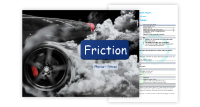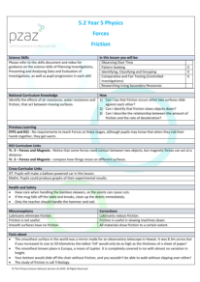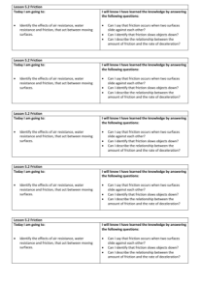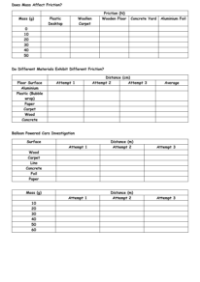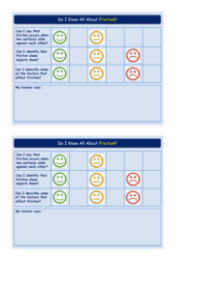Friction - Teacher Explanation

Science Resource Description
Welcome to lesson 5.2 on Friction, part of the Year 5 Forces Unit in the National Curriculum. In this lesson, pupils will explore the effects of various forces such as air resistance, water resistance, and friction, specifically focusing on how they act between moving surfaces. It is important to note that for safety reasons, pupils will be handling bamboo skewers and should be cautious of the pointed ends. Additionally, a ceramic mug will be used in one of the activities, and if it breaks, it is crucial to clean up the fragments immediately and vacuum the area. Prior to the lesson, some preparation is necessary, including using a hammer and nail, which pupils should not handle during the lesson. This session is not only informative but also offers cross-curricular links to Design and Technology (DT) and Mathematics, where pupils can graph their experimental results.
The lesson includes a demonstration familiar to many, where a magician yanks a tablecloth, leaving the items on the table undisturbed. This serves as a friction experiment, and pupils will use a cloth and mug to understand the concept better. They will also engage in an activity to investigate how mass affects friction by dragging a container across different surfaces and measuring the force required with a Newton meter. The experiment will be repeated with increasing amounts of mass to observe the effects on friction. Finally, pupils will build and test a balloon-powered car, which will further illustrate the principles of friction as they observe how different surfaces and weights affect the car's movement. This hands-on activity not only reinforces the scientific concepts but also encourages problem-solving and creative thinking.

